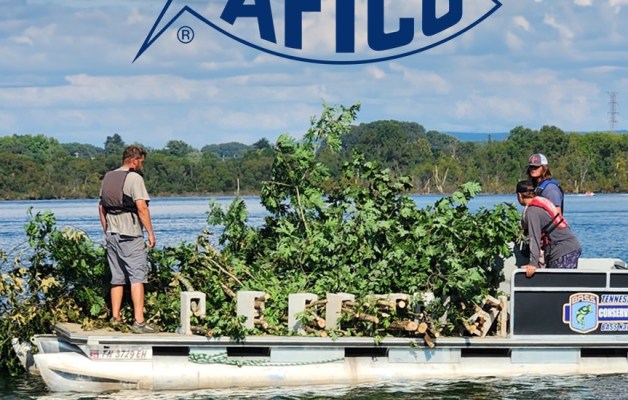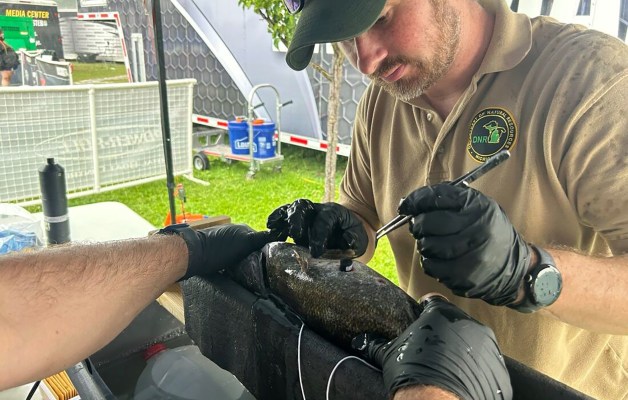
That great online deal you scored might have meant you weren’t doing your part to support fishing.
Taxes from tackle sales and money from fishing license sales are dedicated to state wildlife agencies to benefit the resources and provide access for anglers. Buying online from a foreign company at times can bypass those excise taxes, which cheats the system, says Mitch King of BEAM Consulting.
“The big issue that anyone needs to be aware of is the leakage of excise tax dollars,” King said. “Because of internet sales, a lot of people are looking for the cheapest way to buy tackle. We’re getting it 10% cheaper, wondering why and thinking that’s the greatest thing in the world, but what’s happened is they’re bypassing the excise tax. It’s a pretty significant hit and can really hammer the state fish and wildlife agencies.”
King, who worked on excise tax issues during his 31 years with the U.S. Fish and Wildlife Service, continues consulting in that same vein with state agencies and others. He also holds seminars on the topic, recently addressing the topic during one of ICAST’s online seminars last month.
The question King is asked most: Where do excise taxes go?
First, he provides some background. In 1937, the Pittman-Robertson Act created the Wildlife Restoration Fund that’s supported by an excise tax paid by firearm and ammunition manufacturers and importers. The fishing world followed that successful user-play, user-pay system, which saw wildlife populations rebound and flourish, with the Dingell-Johnson Act of 1950. It created the Sport Fish Restoration Fund, which put a 10% tax on manufacturers and importers of fishing tackle.
“These excise taxes on sport fishing equipment as well as motorboat taxes go to state fishing agencies,” he said. “And they are exclusively used, along with fishing license sales, to help grow fishing, help provide access. They go to grow fishery populations.”
King said state wildlife agencies can get from 60 to 80% of their operating budgets from this revenue stream. Addressing the business aspect in his ICAST webinar, he said that increased fishing opportunities, with state agencies able to build more ramps and fishing piers and stock more fish, creates a scenario of revolving funds.
“They go toward making sure you and all your customers have really good opportunities to go out and fish and get their boats out on the water,” he said. “If that happens, you know they’re going to be coming in buying your equipment. Bottom line, these taxes go to grow your business.”
King details where the $487 million in annual funding from federal excise taxes goes in his Rising Tide graphic:
- 200 species of fish that state agencies monitor, research and manage;
- 316 state hatcheries that annually produce 1.3 billion fish of more than 70 species;
- 1,000 new ramps constructed every five years to improve boater and angler access;
- 6,439 areas operated and maintained for public boating and fishing areas;
- 1 million students receive training in aquatic education every three years.
King said 10% is the standard excise tax on most all fishing equipment, with exceptions being fishing rods having a $10 cap and tackleboxes and electric motors taxed at 3%. The Federal government requires a 25% match,” he said, “So states can take $1 in fishing license revenue and match it up with $3 of the excise taxes.
“All of the fishing license dollars stay with the state and are restricted from being used on anything other than fishery management. If you’re in the state of Arkansas and buy a fishing license, you can rest assured all of that money goes to your state’s efforts,” King said. “Every state, before they could receive excise taxes, they had to guarantee that they would not divert any money out of the excise taxes or their license revenue for non-fishery activities. That’s been tried many times. The governors have looked over at that and said, ‘Let’s just take this fishing license dollars or excise tax dollars,’ and they can’t do that. They get in trouble real fast.”

Some states can expect an uptick as many are experiencing record license sales because of the COVID-19 pandemic. Some outdoors retailers have run low on supplies, and while part of that has been distribution shortfalls, many in the industry are hopeful fishing is on the rise as casual or new anglers are shut out of most other leisure activities.
“I feel badly for those who have been impacted directly,” said Glenn Hughes, president of the American Sportfishing Association that puts on ICAST. “Our industry took a trip in early March and April, but it’s exploded since then. The biggest problems our manufacturers have now is producing and distributing enough product. That’s from almost every fishing tackle, rod and reel manufacturer as well as the retailer in trying to provide products.”
In the U.S., excise taxes are usually paid by manufacturers at the first point of sale to wholesalers or retailers, and that’s factored into the cost of the product.
“Normal Joe who walks into Bass Pro and starts buying has no idea that factored into that cost, there’s been an excise tax paid,” King said. “It’s the rare angler who understands where the excise tax goes and we’re trying to make that different.”
The biggest issue, King said, is the leakage from overseas manufacturers selling directly to consumers. The shift to more online commerce has revealed a loophole where some of the larger providers are taking advantage.
“Rather than considering themselves as ‘importers,’ online marketplace providers have positioned themselves to be a facilitator of the transaction between the overseas manufacturer and the U.S. consumer,” King said. “They emphasize the point that they do not ‘own’ the product and therefore are not responsible for paying the excise tax.
“So, when you see comparable products available on these larger online marketplace providers, you can bet that a significant portion of that savings is related to the excise taxes not being paid. Consequently, fishery management activities are suffering.”
King offered an example and why it matters in an article published on the Rocky Mountain Elk Foundation website. A reel that retails for $150 from a U.S. distributor might be found online for $105 because the excise tax was not added. He said that’s unfair to the companies complying with the tax, and takes away from America’s user-play, user-pay funding system that has been copied by other nations.
King, who also works with hunting organizations on the issue, said there are groups working to close the loophole.
“It was ongoing and it got wrapped up in the COVID issue,” he said. “I was working with Archery Trade Association and ASA, Mike Leonard there, trying to get this issue on the front burner with federal legislators. It’s a slow process, but we started then COVID came along and sort of overshadowed that, but we’re trying to get it back going.”





